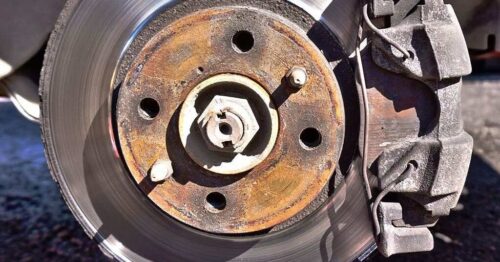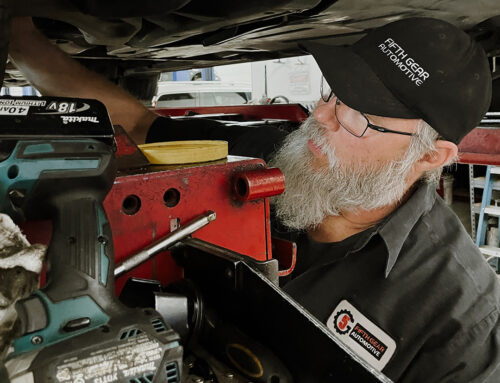DO I NEED TO REPLACE RUSTY ROTORS?
How much rust is too much rust? For most standard vehicles, brake rotors are made of cast iron or steel, both of which rust when exposed to moisture. It’s inevitable that brakes will gather a little rust from being exposed to the elements. Light rusting is nothing to sweat over if its formation is supervised. If you’re worried about rust forming on your brakes, it’s easy to clean or request that your auto technician wipe it off when inspecting your vehicle. If your brakes are not performing at top speed, bring your vehicle to your local auto repair shop so they can assess the issue.

Problems arise when rust builds up around the area where the brake pads touch the rotor. Rust reduces friction between the rotor disc and pads, causing the vehicle to wobble and shake when braking. If left alone, rust builds up on the outside of the brake pads’ path. This rust ring may cause your vehicle to shake and take longer to brake.
Besides rust, small holes or “pits” may also form on neglected rotors. Overheating and corrosion create pitting on the surface of a rotor. Consistent hard braking can warp or form indents on the rotor that reduce friction with the pads. Natural elements like salt and water also corrode the metal in your brakes. Worn brake pads also cause pitting when they are “metal to metal” with the rotor. Pitting also happens when the brakes don’t have proper lubrication or endure corrosion from lack of washing.

Replacing any part of your vehicle depends on how often you use it and environmental factors. Ask your local auto repair shop for a personalized recommendation for rotor replacement. Worried about your vehicle’s health? Schedule an appointment with Fifth Gear Automotive to receive a free diagnostic check.

Information courtesy of Paul Campanella’s Auto & Tire Center!









